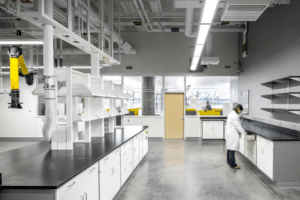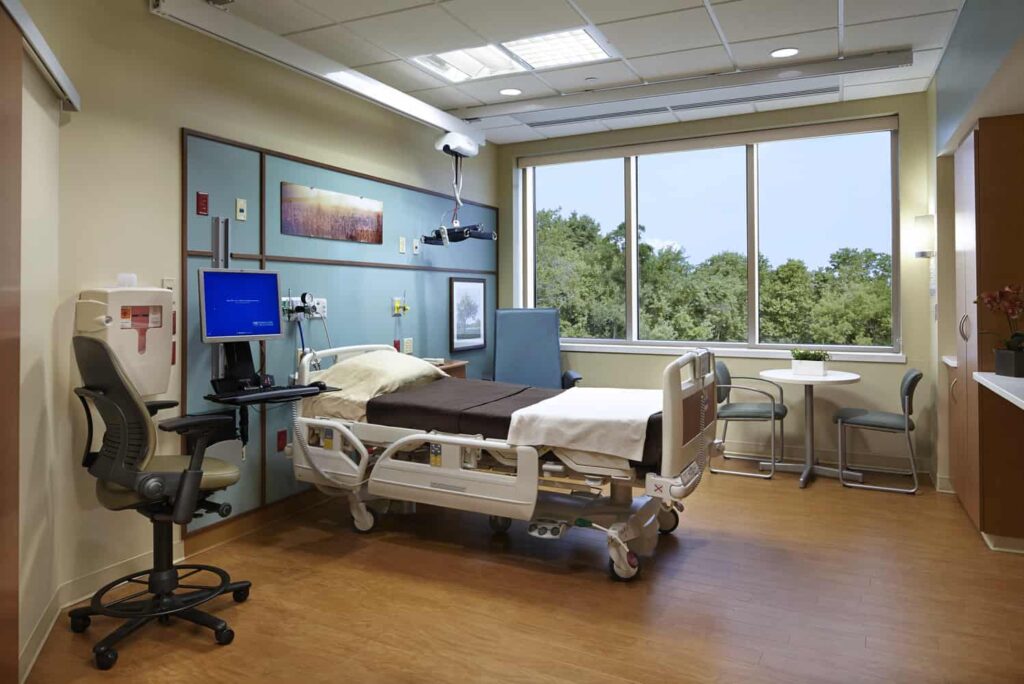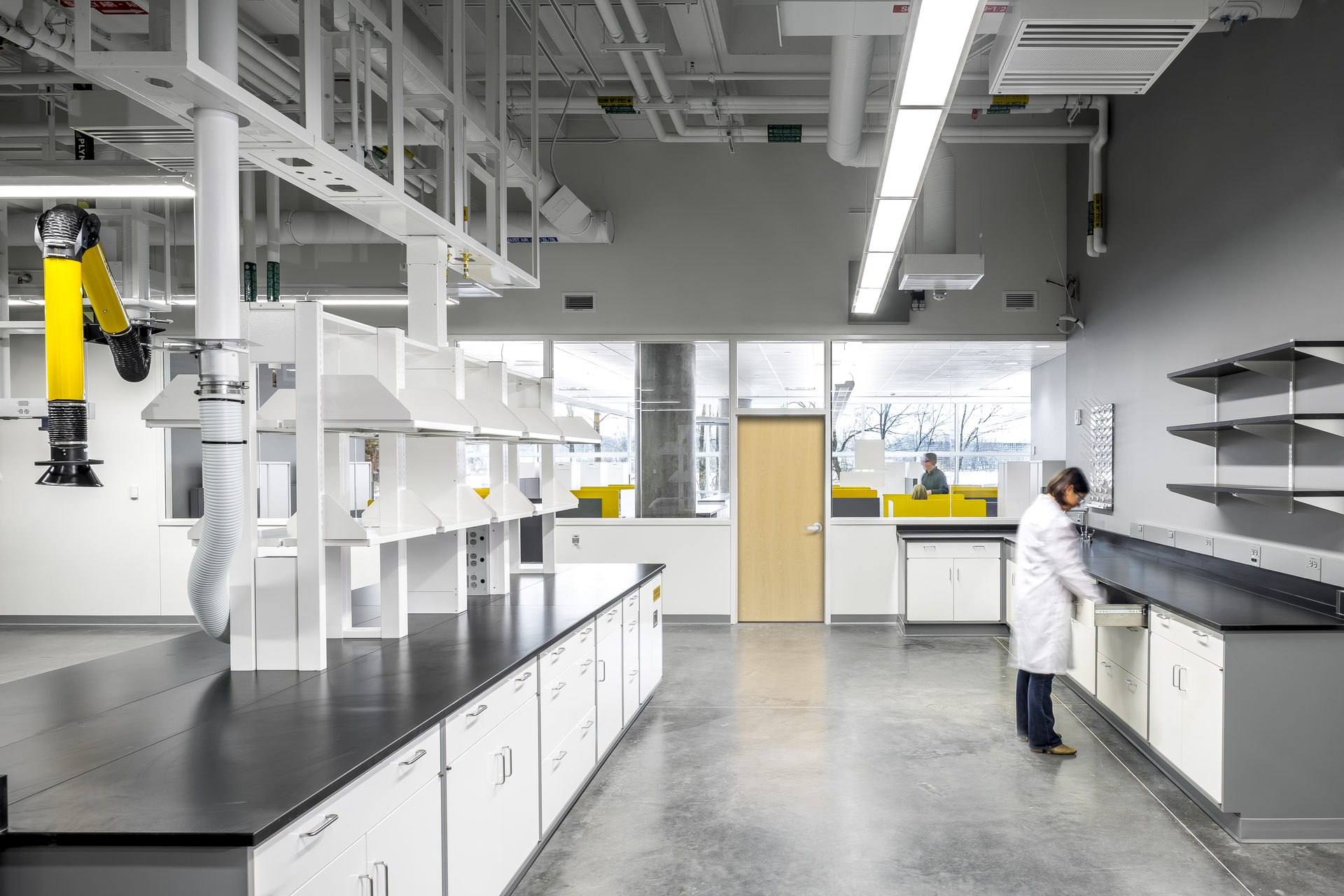As an expected surge continues to have hospitals on notice, converting traditional patient rooms into negative pressure rooms is gaining urgency.
Using guidance released in March from ASHE, we explored a few scenarios which hospital officials and facility managers could consider when converting rooms in order to accommodate the increasing amount of severely ill COVID-19 patients. As there are a small number of hospitals in the United States with airborne infection isolation rooms, we hope this can serve as a helpful tool in providing realistic conversion solutions for healthcare facilities.
In all examples, facility staff should work with a qualified healthcare mechanical engineer as well as local department of health staff to finalize the requirements to convert the patient rooms mechanical system into a negative pressure room.
Same-handed Patient Rooms with No Ante Room
In this scenario, location of the PPE carts and demarcation of the PPE zone within the room are two of the issues that should be addressed. Our recommendation would be to begin the PPE zone in line with the entrance to the patient bathroom, marking the PPE zone with red tape. PPE supplies in a nurse server, mobile cart, door hanger, etc., should be located outside the patient room as should a hand-washing sink and alcohol-based hand sanitizer.
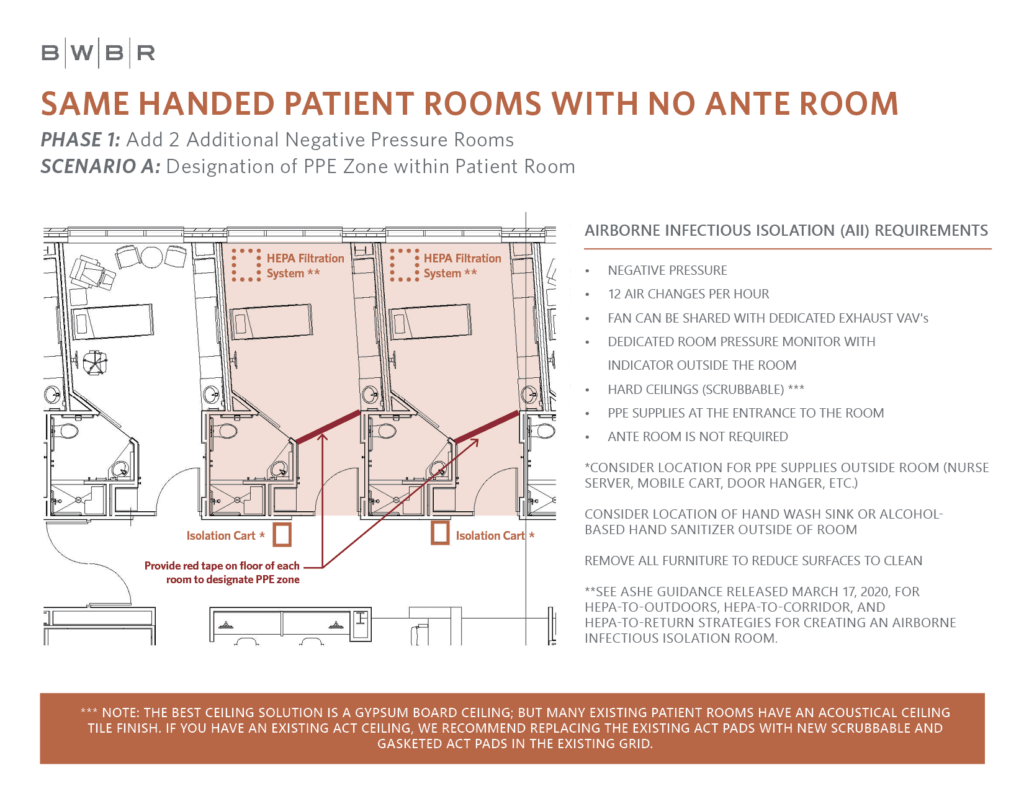
Same-handed Patient Rooms with Internal Ante Rooms
In this scenario, an isolation wall system or portable ante room can create an ante room space within the patient room. The walls would be aligned with the entrance to the patient bathroom. It is recommended to still locate PPE supplies, hand washing sinks, and hand sanitizers outside of the patient rooms.
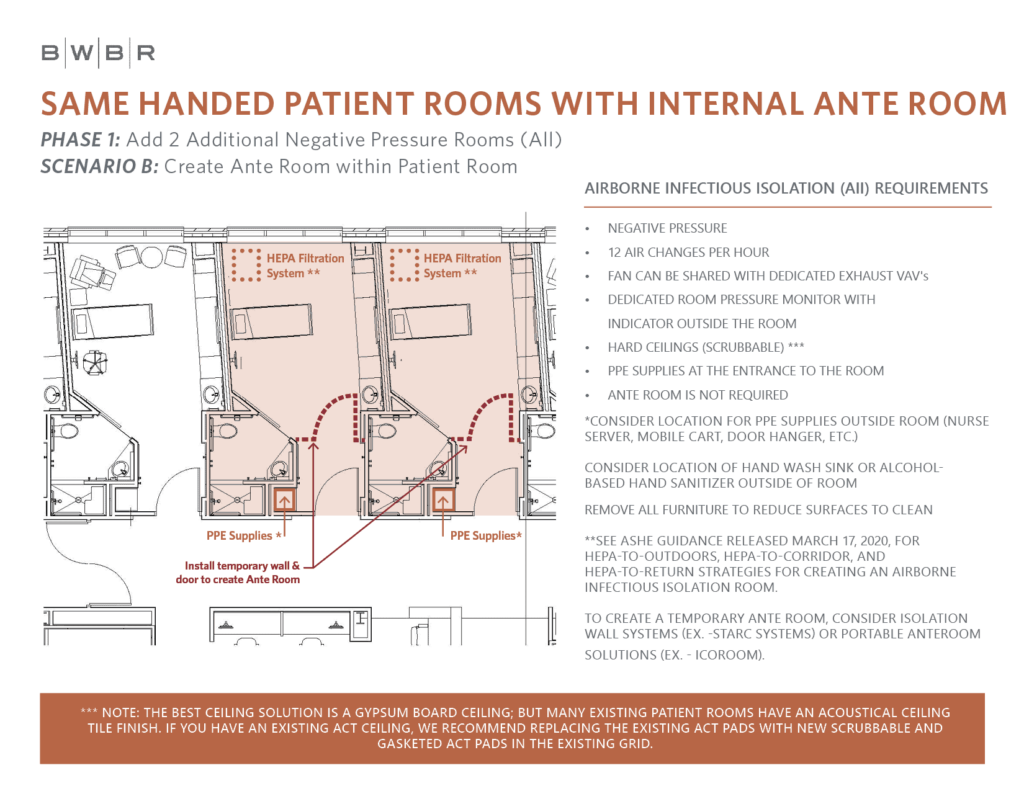
Same-handed Patient Rooms with External Ante Rooms
Using an isolation wall system or portable anteroom solution, an ante room could be created in the corridor that maintains a 5-foot minimum corridor width for passage. This scenario also provides an alternative strategy for HEPA air filtration. PPE supply carts and hand washing/sanitizing station are located outside of the ante room.
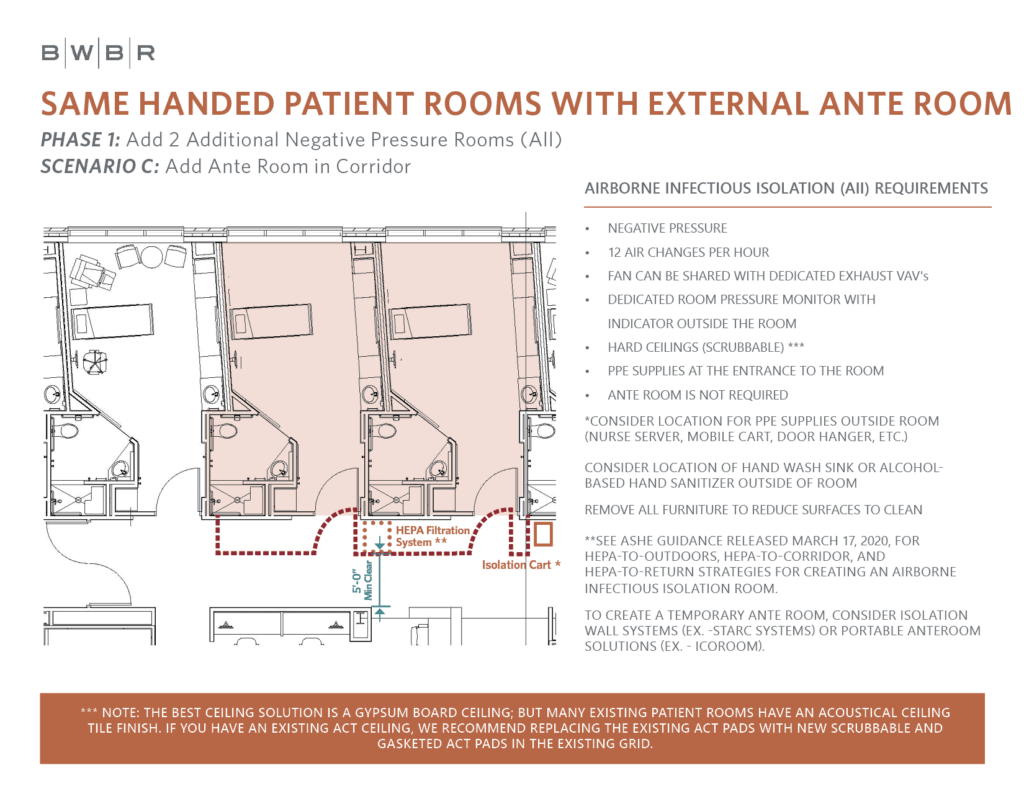
Mirrored Patient Rooms with No Ante Room
Using red tape, mark the PPE zone at the entrance to each room. Continue to use existing location for PPE supplies and handwashing/sanitizing outside of patient rooms.
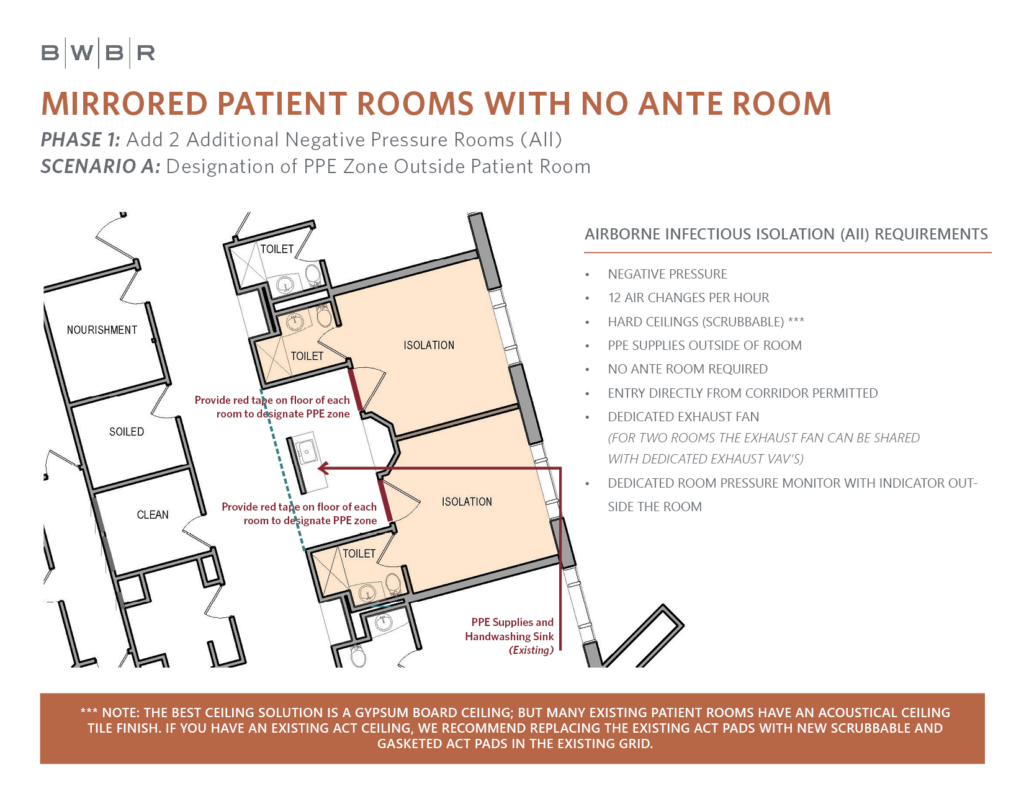
Mirrored Patient Rooms with External Ante Room
Using an isolation wall system or portable anteroom solution, an ante room could be created in the corridor with a HEPA filtration system serving both rooms. Alternatively, a single room could be fitted with an internal or external ante room, leaving the other room with no ante room. PPE supplies would remain available in cabinets. Hand washing/sanitizing station are outside of the ante room.
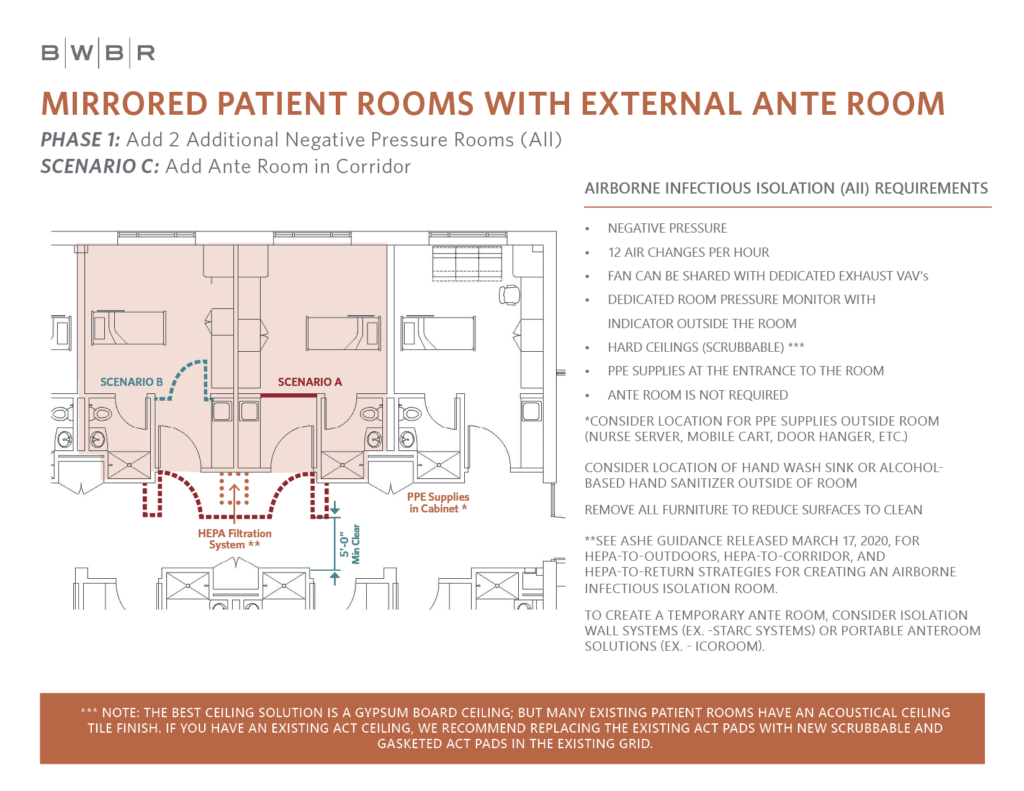
Same-handed Patient Rooms for 4 Patients with No Ante Room
Utilizing ballasted plastic curtains, beds are separated within the room. The HEPA filtration system needs to be set equidistance between the patient. Mark the PPE zone within room using red tape and set PPE supplies outside of the room.
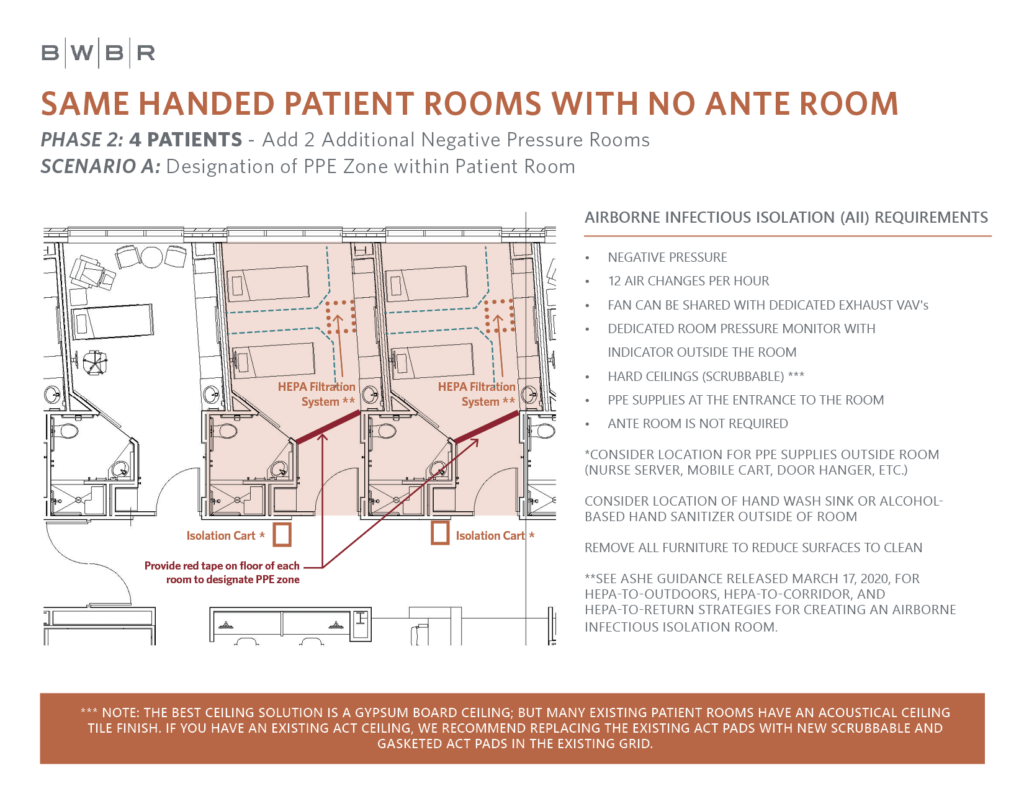
In all scenarios, dedicated room pressure monitors are located outside of the patient rooms. All furniture would be removed to reduce cleaning surfaces. Doors to patient rooms would remain closed and patient transport and transfers would be limited.
Gypsum board ceilings are preferable for the hard surface and cleanability. As many existing patient rooms are finished with acoustical ceiling tiles, we recommend replacing the existing ACT pads with new scrubbable and gasketed ACT pads within the existing grid.

